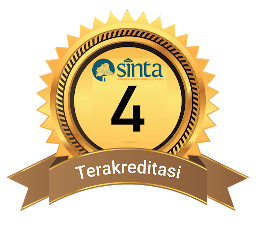Development of Chemical Module Based on Problem Based Learning on Material Petroleum in SMAN 2 Mataram
DOI:
10.29303/cep.v7i1.5147Published:
2024-05-31Issue:
Vol. 7 No. 1 (2024): Edisi Mei 2024Keywords:
Development, Problem Based Learning, PetroleumArticles
Downloads
How to Cite
Abstract
This study aims to develop a chemical problem-based learning module on petroleum material at SMAN 2 Mataram by using validity and practicality tests. The research model used is the 4D model, namely define, design, development, and dissemination. This study used a purposive sampling technique in sampling, involving 36 students of class XI MIPA 8 at SMAN 2 Mataram who were then used as respondents in a practicality test. Data analysis shows a good level of validity, with an Aiken V index of 0.88. Meanwhile, the practicality module was analyzed using the practicality index (student and teacher response questionnaire) so that the practicality module proportions were 86% (students) and 94% (teachers). These results provide evidence that the problem-based learning chemistry module on petroleum material is valid and practical. Therefore, this module can be applied in the learning process at SMAN 2 Mataram and maybe also in other schools that have a similar curriculum
References
Munib, Achmad, 2011. Pengantar Ilmu Pendidikan. Semarang: Unnes Press.
Anonim, 2008. Panduan Pengembang Bahan Ajar. Jakarta: Direktorat Jendral Manajemen Pendidikan Dasar dan Menengah.
Masruroh, A., 2015. Pengembangan Modul Pembelajaran Menulis Cerpen Berbasis Pengalaman (Experiential Learning) untuk Siswa SMP/MTs. Skripsi. Yogyakarta: Fakultas Bahasa dan Seni Universitas Negeri Yogyakarta.
Thiagarajan, Sivasailam., Semmel, Daroty., dan Semmel, Melvyn I., 1947. Instructional Development for Training Teacher of Exceptional Children: a Source Book. Minnesota University Of Minnesota.
Sugiyono, 2017. Metode Penelitian dan Pengembangan (Research and Development). Bandung: Alfabeta.
Daryanto, 2013. Media Pembelajaran. Yogyakarta: Pustaka Belajar.
Asyhar, Rayandra. 2012. Kreatif Mengembangkan Media Pembelajaran. Jakarta: Referensi.
Author Biographies
Ulyl Amryani, Universitas Mataram
Muti’ah Muti’ah, Pendidikan Kimia, FKIP, Universitas Mataram
Burhanuddin Burhanuddin, Pendidikan Kimia, FKIP, Universitas Mataram
Jeckson Siahaan, Pendidikan Kimia, FKIP, Universitas Mataram
License
Copyright (c) 2024 Ulyl Amryani, Muti’ah Muti’ah, Burhanuddin Burhanuddin, Jeckson Siahaan

This work is licensed under a Creative Commons Attribution-ShareAlike 4.0 International License.
Authors who publish with Chemistry Education Practice agree to the following terms:
- Authors retain copyright and grant the journal right of first publication with the work simultaneously licensed under a Creative Commons Attribution License 4.0 International License (CC-BY-SA License). This license allows authors to use all articles, data sets, graphics, and appendices in data mining applications, search engines, web sites, blogs, and other platforms by providing an appropriate reference. The journal allows the author(s) to hold the copyright without restrictions and will retain publishing rights without restrictions.
- Authors are able to enter into separate, additional contractual arrangements for the non-exclusive distribution of the journal's published version of the work (e.g., post it to an institutional repository or publish it in a book), with an acknowledgement of its initial publication in Chemistry Education Practice.
- Authors are permitted and encouraged to post their work online (e.g., in institutional repositories or on their website) prior to and during the submission process, as it can lead to productive exchanges, as well as earlier and greater citation of published work (See The Effect of Open Access).






